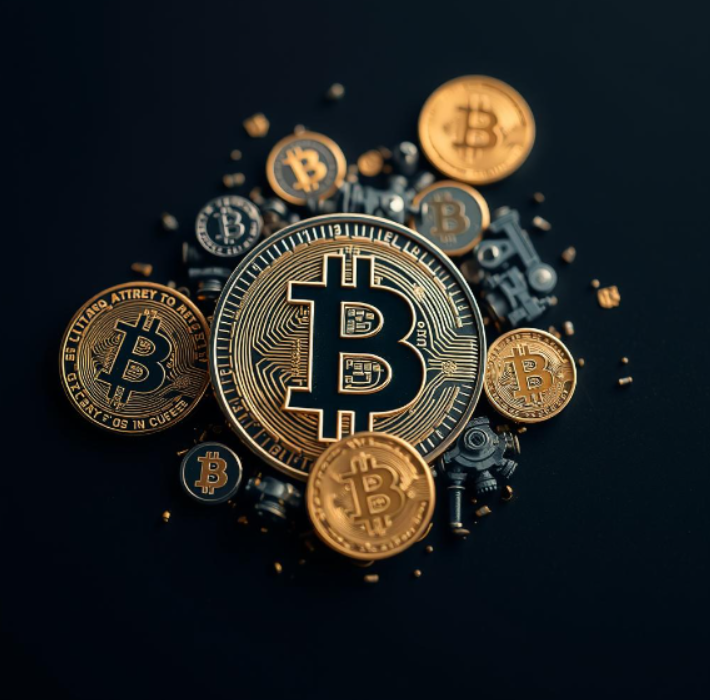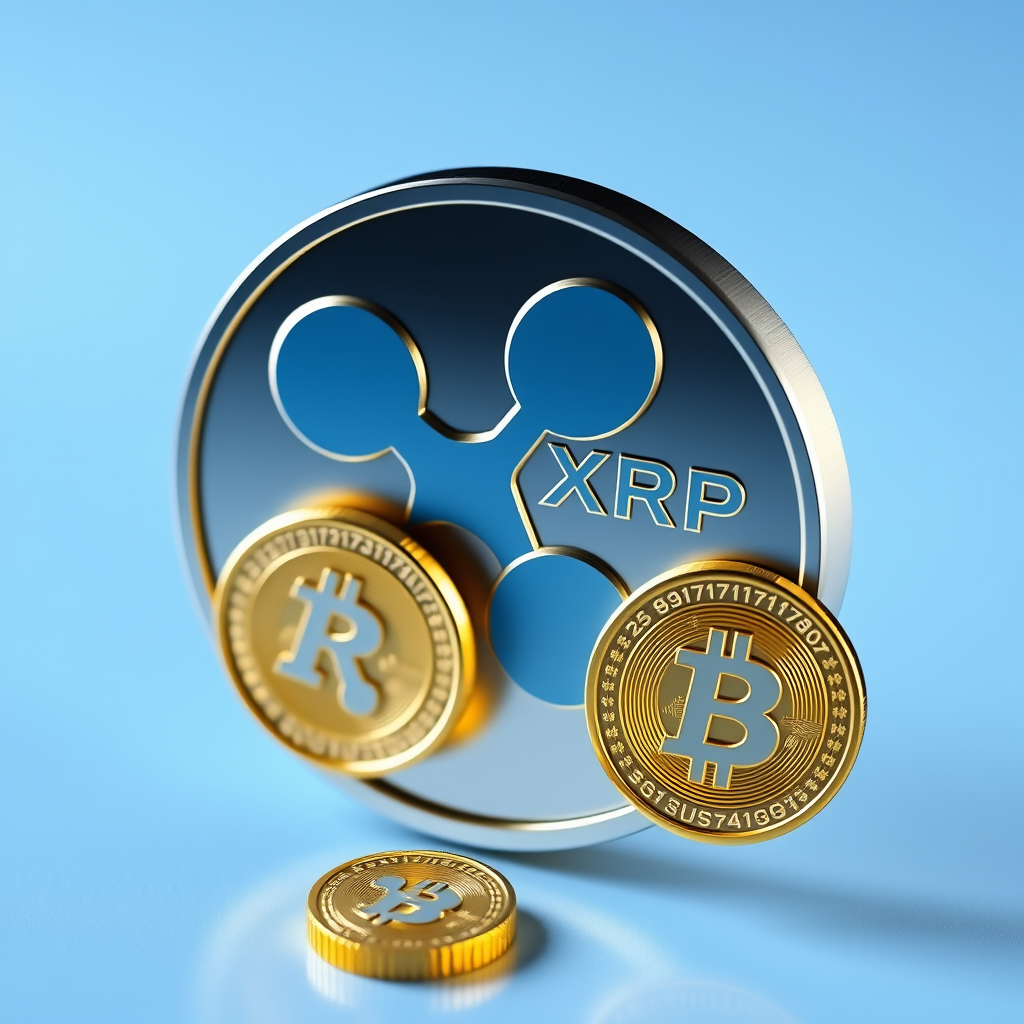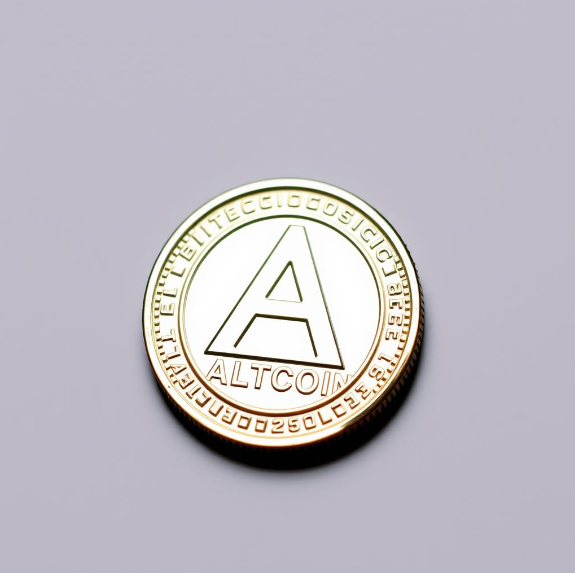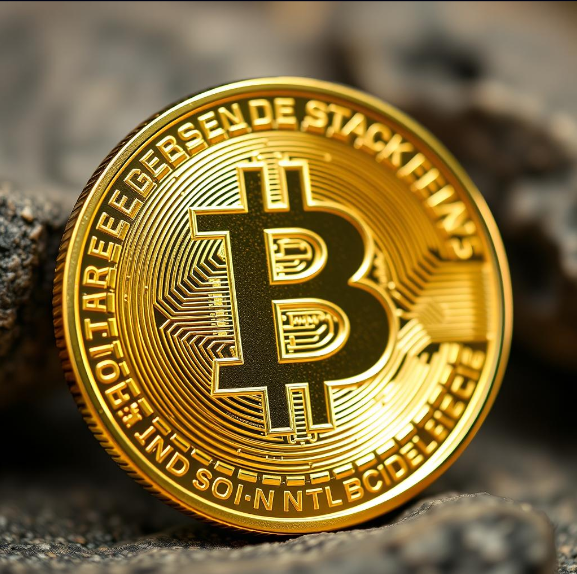
- Best Crypto ExchangesAlgorithmic Trading PlatformsNo KYC ExchangesArbitrage BotsAuto DCAAutomated TradingBinary OptionsCentralized ExchangesContract TradingCopy TradingCrypto Index TradingCrypto-to-Fiat ExchangesCrypto BrokersDay TradingDecentralized ExchangesDemo Trading AccountsDerivative ExchangesDual Investment TradingBeginner ExchangesFutures TradingGrid TradingHybrid ExchangesLending PlatformsLeverage TradingLiquidity PoolsLive TradingLowest Fees ExchangesMargin TradingMarket Making ExchangesOptions TradingP2P Crypto ExchangesPayPal Supported ExchangesPerpetual Futures TradingRecurring BuysSafest ExchangesSavings AccountsShorting ExchangesStaking Rewards ExchangesSwap ExchangesSwap PlatformsTokenized Stocks TradingZero Fee TradingCrypto OTCInsitutional TradingBitcoin OTCBitcoin OTC GuidesBitcoin Trading BotsCrypto AppsCrypto Trading AppsCrypto Trading PlatformsAutralian Crypto Trading PlatformsExchanges for BitcoinPlaces to buy CryptoUSA Bitcoin ExchangesBitcoin Trading StrategiesTradingDEX Best PracticesDeFi Best PracticesDEX OverviewDEX Tutorials
- Best Crypto WalletsSelf-Custodial WalletsCustodial WalletsHardware WalletsMulti-Sig WalletsMobile WalletsDesktop WalletsBrowser Extension WalletsLightning WalletsDeFi Bitcoin WalletsPaper WalletsBitcoin WalletsSecure Bitcoin WalletsEthereum WalletsSolana WalletsPolkadot WalletsBNB WalletsLitecoin WalletsRipple WalletsCardano WalletsAvalanche WalletsTezos WalletsNFT WalletsDeFi WalletsStaking WalletsTrading WalletsGaming WalletsPrivacy WalletsHODL WalletsRemittance WalletsEnterprise WalletsMultichain WalletsWallet ServicesWallet Backup OptionsSecure WalletsWallet Security TipsWallet Setup GuideWallet Downloads
- Best Crypto & Bitcoin CasinosAltcoin CasinosCard CasinosCrypto CasinosETH CasinosGuides: CasinosGuides: Blackjack StrategyGuides: How to Play BlackjackGuides: How to Play PokerGuides: How to Play RouletteGuides: Poker StrategyGuides: Roulette StrategyTop CasinosBingoCasino BotsNo KYCArbitrum CasinosAvalanche CasinosBaccaratBase CasinosBNB CasinosBCH CasinosBitcoin CasinosBlackjackCasino BonusesCardano CasinosCluster PlaysCosmic Jackpot GamesCrapsCrashDAI CasinosDecentralized CasinosDeFi CasinosDiceDiscord CasinosDogecoin CasinosDrops and WinsEgyptian SlotsETH BonusesETH Live DealerETH No Deposit BonusesETH RouletteETH SlotsFree SpinsGalactic Slot MachinesGame ShowsHigh RollersHigh Volatility CasinosHorror Casino GamesInstant WithdrawalJackpotKenoLitecoin CasinosLive DealerMetaMask CasinosMetaverse CasinosMinesMinimum Deposit CasinosMultiplayer CasinosNewest CasinosNFT CasinosNo Deposit BonusesNorse Mythology SlotsTrump CasinosOptimisim CasinosPirate SlotsPolygon CasinosPrivacy-Focused CasinosProgressive JackpotProvably FairRespinsRouletteScatter PaysScratch CardsShiba Inu CasinosSic-BoSlotsSocial CasinosSolana CasinosStablecoin CasinosSweepstakes CasinosTON CasinosToshi CasinosTreasure Hunt SlotsTRX CasinosUSDC CasinosTether CasinosVerse CasinosVideo PokerViking Casino GamesVIPWheelRipple CasinosPachinkoLotteryMeme CasinosMobile CasinosOnline CasinosPlinkoPokerGuides: Poker FAQGuides: Poker LegalityGuides: Poker PromotionsGuides: Poker Room ReviewsGuides: Poker TournamentsTable GamesTelegram CasinosWeb3 CasinosMegaways SlotsBook of SlotsPlay Along with CryptoDaily ContestsWeekly RafflesBuy Extra Ball GamesHold and Win Slots
- Best Bitcoin SportsbooksFootballAmerican FootballNo KYCAustralian Open TennisBadmintonBaseballBasketballBetting ExchangesBonusesBoxingBundesligaChessCollege BasketballCricketICC ChampionsIndian Premier LeagueCyclingDartsEnglish Premier LeagueEsportsCall of DutyCSGODOTA-2FIFALOLStarcraftValorantWorld of WarcraftFIFA World CupIce Hockey BettingNHL Entry Draft 2025Ice Hockey World Championship 2025Formula 1French Open TennisGrand Slam TennisGreyhound RacingHandballHockeyHorse RacingKentucky DerbyLa LigaLive BettingMarch MadnessMMAMotorsportsNascarNBA DraftNFL DraftOlympicsPGAPoliticsPolitics (Trump)Politics (Kamala)US PoliticsRugbySerie ASnookerStock Car RacingSuper BowlTable TennisUFCUFC Fight NightUp vs DownUS Open TennisVolleyballWimbledonWinter SportsGolfSoccerTennis
Best Cryptocurrencies to Invest in 2025
The cryptocurrency landscape is ever-evolving, and 2025 brings new opportunities and challenges for investors. In this guide, we highlight some of the best cryptocurrencies of the year, focusing on their features, market position, and use cases.
Whether you're a seasoned investor or just starting, understanding the top-performing cryptocurrencies will help you make better investment choices. From Bitcoin to innovative newcomers, we’ve got you covered.
Supported cryptocurrencies
BTC, BCH, ETH, USDT, USDC, VERSE
Year launched
2015
Learning Center
Access a wealth of information to learn about crypto, DeFi, and Web3.
News Portal
Stay updated with the latest developments in the crypto space.
Market Data
Explore real-time data on major cryptocurrencies.
Web Wallet
Manage your crypto assets directly from any browser.
Supported cryptocurrencies
240+
Year launched
2012

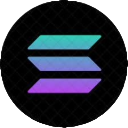

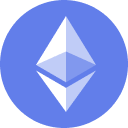
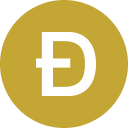



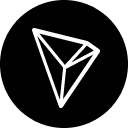

Receive $75 in the crypto of your choice for you and your referee when they sign up and trade at least $100 within 30 days. Plus, unlock referral tiers to earn trading fee revenue for up to 12 months
Supported cryptocurrencies
70+
Year launched
2014
Top Cryptocurrencies to Watch in 2025
Bitcoin.com Review
Bitcoin.com is a comprehensive cryptocurrency platform that offers a suite of services designed to make digital assets accessible to everyone. Since its inception in 2015, the platform has been dedicated to introducing newcomers to the world of crypto, providing tools for buying, selling, trading, and storing various cryptocurrencies, including Bitcoin (BTC), Ethereum (ETH), Bitcoin Cash (BCH), and more. With a user-friendly interface and a focus on education, Bitcoin.com serves as a gateway for individuals looking to explore and engage with the crypto ecosystem.
The Bitcoin.com Wallet is a non-custodial, multi-currency wallet that empowers users with full control over their private keys and digital assets. Available on multiple platforms, including iOS, Android, and desktop, the wallet supports a wide range of cryptocurrencies and offers features such as in-app trading, staking, and access to decentralized applications (dApps). Security is a top priority, with options like biometric authentication and encrypted backups ensuring that users' assets are protected.
Beyond wallet services, Bitcoin.com provides a wealth of educational resources to help users understand the intricacies of blockchain technology and cryptocurrency markets. The platform's Learning Center offers articles, tutorials, and market analyses, catering to both beginners and seasoned investors. Additionally, Bitcoin.com hosts a news portal that keeps users informed about the latest developments in the crypto space.
The platform also integrates the VERSE token, which serves as a utility and rewards token within the Bitcoin.com ecosystem. Users can earn VERSE through various activities and use it for staking, accessing exclusive features, and participating in community governance. This integration enhances user engagement and fosters a vibrant community around the platform.
Perks
Supported cryptocurrencies
BTC, BCH, ETH, USDT, USDC, VERSE
Year launched
2015
Learning Center
Access a wealth of information to learn about crypto, DeFi, and Web3.
News Portal
Stay updated with the latest developments in the crypto space.
Market Data
Explore real-time data on major cryptocurrencies.
Web Wallet
Manage your crypto assets directly from any browser.
Verse Token Integration
Participate in the ecosystem's native token for rewards and staking.
Coinbase Review
Coinbase is a leading platform in the cryptocurrency space, offering users a simple and secure way to buy, sell, and manage digital assets. Founded in 2012, Coinbase has grown to become one of the most well-established exchanges, offering a wide range of services for both beginners and experienced crypto enthusiasts. The platform is known for its user-friendly interface, making it an excellent choice for those new to cryptocurrencies. With robust security measures in place, it provides users with peace of mind while navigating the complexities of the crypto world.
One of the standout features of Coinbase is its ease of use. The platform is designed to make crypto transactions as straightforward as possible, offering seamless onboarding for new users. In addition to its web platform, Coinbase has a highly rated mobile app that offers all the functionalities needed to manage digital assets on the go. From buying and selling Bitcoin to exploring hundreds of altcoins, Coinbase provides users with access to a broad spectrum of the crypto market.
Coinbase also excels in its commitment to security. The platform uses advanced security features, including two-factor authentication (2FA) and cold storage for the majority of its assets, ensuring that user funds are well-protected. Additionally, Coinbase is one of the few exchanges that is publicly traded, further enhancing its credibility and transparency. Users can feel confident knowing that Coinbase operates under stringent regulatory guidelines, adding an extra layer of trust.
The educational resources on Coinbase are another major advantage, especially for those new to cryptocurrency. Coinbase offers a variety of learning tools that help users understand the fundamentals of cryptocurrency and blockchain technology. The platform also provides incentives for users to learn, rewarding them with crypto for completing educational modules. This feature makes Coinbase not only a trading platform but also a great resource for personal growth in the crypto space.
Overall, Coinbase has built a reputation as a secure, user-friendly, and reliable platform for cryptocurrency trading and management. With a wide range of services, including access to an expansive list of cryptocurrencies, a robust mobile app, and extensive educational resources, Coinbase is well-suited for anyone looking to dive into the world of digital assets. Its strong focus on security and compliance further cements its status as one of the top choices for crypto traders globally.
Perks
Supported cryptocurrencies
240+
Year launched
2012
Gemini Review
• Gemini is a US-based crypto exchange with tools for both new and advanced traders. Since its founding in 2014 by Cameron and Tyler Winklevoss, Gemini has prioritized creating simple and intuitive products, innovative security practices, licensing, and compliance.
• Gemini is one of the few exchanges that is available in all 50 US States and more than 70 countries globally. Gemini offers trading features for all types of traders. Their ActiveTrader interface is a platform designed and built for traders and features multiple order types, advanced charting tools, and high speeds capable of executing trades in microseconds. Gemini also offers these advanced trading features through their mobile app, so you can trade on the go.
• Highlighting Gemini’s commitment to security, they earned and maintain both SOC 1 Type 2 and SOC 2 Type certifications, operate as a full-reserve exchange and custodian meaning all assets on platform are backed 1:1, and as a NY based company are regulated by the New York Department of Financial Services.
• Gemini does not require any account minimums, making it easy to get started investing in cryptocurrency. Gemini also offers competitive fees, 0.2% maker and 0.4% taker fees on their API fee schedule, and fees decrease as trading volume increases.
• When the referee signs up and places at least US$100 worth of trades within 30 days of signing up, both referrer and referee will receive US$75 in the cryptocurrency of their choice. There are referral tiers that allow traders to earn trading fee revenue on the referees' trades for up to 12 months.
Perks
Supported cryptocurrencies
70+
Year launched
2014
Welcome bonus
Receive $75 in the crypto of your choice for you and your referee when they sign up and trade at least $100 within 30 days. Plus, unlock referral tiers to earn trading fee revenue for up to 12 months
1. Introduction to Top Cryptocurrencies in 2025
The cryptocurrency market is constantly evolving, presenting new opportunities for both seasoned and novice investors. As blockchain technology continues to advance, a variety of projects have emerged to address different sectors, from decentralized finance (DeFi) to non-fungible tokens (NFTs). In this guide, we explore the best cryptocurrencies to invest in during 2025, focusing on their unique features, market dominance, and long-term potential.
2. Bitcoin (BTC)
Bitcoin remains the leader in the cryptocurrency space, both in terms of market capitalization and global recognition. Often referred to as "digital gold," Bitcoin has established itself as a store of value due to its finite supply of 21 million coins. Investors see Bitcoin as a hedge against inflation, similar to precious metals like gold. Additionally, Bitcoin's decentralized nature and strong security protocols make it a trusted asset in the volatile world of cryptocurrencies. While Bitcoin was initially conceived as a peer-to-peer payment system, its use has evolved to serve more as an investment asset and long-term store of wealth.
- Use Cases: Beyond serving as an investment vehicle, Bitcoin is widely used for remittances, payments in select markets, and as a reserve asset for institutions seeking exposure to cryptocurrency.
3. Ethereum (ETH)
Ethereum is much more than just a cryptocurrency-it's a comprehensive platform for decentralized applications (DApps) and smart contracts. While Bitcoin pioneered blockchain technology, Ethereum took it further by enabling programmable contracts and decentralized finance (DeFi) systems. With the successful transition to Ethereum 2.0, the network has shifted from proof-of-work (PoW) to a more energy-efficient proof-of-stake (PoS) consensus mechanism. This upgrade improves Ethereum’s scalability, reduces gas fees, and makes the network more sustainable. The ecosystem surrounding Ethereum continues to be a hub for innovation, with thousands of developers building applications that span industries from gaming to financial services.
- Use Cases: Ethereum is the go-to platform for DeFi, NFTs, and DApps, making it a key player in blockchain ecosystems and an essential asset for those interested in blockchain utility beyond digital currency.
4. Solana (SOL)
Solana has positioned itself as one of the fastest blockchains in the world, capable of processing up to 65,000 transactions per second with minimal fees. This makes Solana a popular choice for developers and projects seeking speed and scalability, particularly for decentralized applications and NFT marketplaces. Solana’s Proof of History (PoH) consensus mechanism, combined with Proof of Stake (PoS), allows for high throughput and energy efficiency, further cementing its role as a competitor to Ethereum. Solana has quickly gained traction with developers and investors alike, thanks to its fast-growing ecosystem and the potential for widespread adoption in areas like DeFi and NFTs.
- Use Cases: Solana is ideal for high-frequency trading applications, gaming platforms, NFTs, and other decentralized apps that require low-latency and high-throughput environments.
5. Cardano (ADA)
Cardano is a research-driven blockchain platform that focuses on security, scalability, and sustainability. It is built on peer-reviewed academic research and emphasizes formal verification-a technique used to verify the correctness of its smart contracts. Cardano’s unique two-layer architecture separates the settlement and computation layers, improving security and scalability. The platform’s use of a proof-of-stake consensus mechanism, known as Ouroboros, allows for energy-efficient and secure transactions. While Cardano has faced criticism for its slow rollout of features, its methodical approach has earned it a reputation as one of the most secure blockchain platforms in existence.
- Use Cases: Cardano is well-suited for decentralized applications, supply chain tracking, and identity management solutions, particularly in emerging markets.
6. Polygon (MATIC)
Polygon, formerly known as Matic Network, is a layer-2 scaling solution for Ethereum. It aims to address Ethereum’s scalability issues by providing faster and cheaper transactions on its sidechain while still benefiting from Ethereum’s security and decentralization. Polygon is increasingly becoming a key player in the DeFi space, offering developers a user-friendly platform for building DApps with high throughput and low fees. In addition to scaling Ethereum, Polygon supports interoperability with other blockchains, making it a vital component of the broader blockchain ecosystem.
- Use Cases: Polygon is commonly used in DeFi, gaming, and decentralized applications that require low-cost and fast transactions. It also supports Ethereum scaling solutions, making it an integral part of the Ethereum ecosystem.
7. Avalanche (AVAX)
Avalanche is a high-performance smart contract platform that focuses on scalability, speed, and low transaction costs. Its unique consensus protocol enables the network to process thousands of transactions per second while maintaining a high level of security. Avalanche is often considered a direct competitor to Ethereum, as it offers many of the same features-such as support for smart contracts and decentralized applications-while addressing the scalability issues that have plagued Ethereum. The platform is highly flexible, supporting custom blockchain development and decentralized finance projects, making it a powerful option for developers and enterprises.
- Use Cases: Avalanche is commonly used in DeFi, enterprise blockchain solutions, and decentralized applications due to its high-speed transaction processing and low fees.
8. Chainlink (LINK)
Chainlink is a decentralized oracle network that provides real-world data to smart contracts on the blockchain. Oracles play a crucial role in decentralized finance and other blockchain applications by ensuring that smart contracts receive accurate, timely data. Chainlink’s oracles are trusted by many top blockchain platforms, and its partnerships span industries from insurance to gaming. By solving the problem of off-chain data integration, Chainlink enables more complex and useful decentralized applications, thus positioning itself as an essential infrastructure provider for the blockchain space.
- Use Cases: Chainlink is integral to decentralized finance (DeFi), insurance platforms, and any blockchain-based applications that require secure and reliable data from the real world.
9. Polkadot (DOT)
Polkadot is a next-generation blockchain platform designed to enable different blockchains to communicate and share data with one another. Its main innovation, the parachain architecture, allows Polkadot to scale by processing multiple blockchains in parallel (parachains). This interoperability makes it easier for developers to build decentralized applications that can work across multiple blockchains. Polkadot’s ecosystem is growing rapidly, with projects spanning DeFi, privacy, gaming, and more. As a multichain network, Polkadot enables innovation and collaboration between otherwise isolated blockchain systems, making it a key player in the future of decentralized networks.
- Use Cases: Polkadot is ideal for cross-chain data transfers, decentralized applications, and networks that require interoperability and scalability across multiple blockchains.
10. Conclusion
In 2025, the cryptocurrency landscape offers diverse options for investors, ranging from long-established leaders like Bitcoin and Ethereum to innovative newcomers like Solana and Avalanche. Each of these cryptocurrencies offers unique value propositions, whether through scalability, security, interoperability, or specific use cases. As always, thorough research and an understanding of your investment goals are essential when navigating this dynamic market. With the right strategy, investing in these top cryptocurrencies can provide significant growth potential while also






